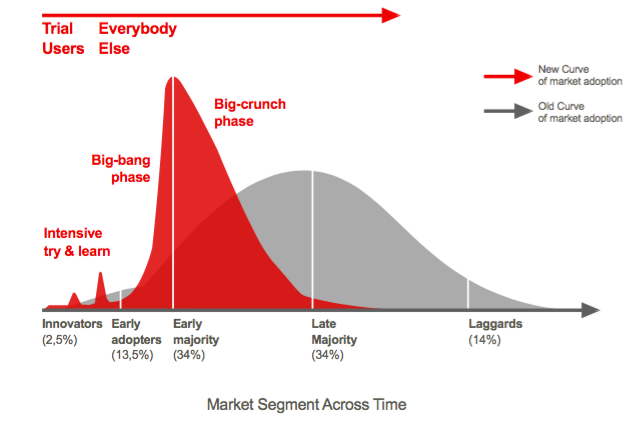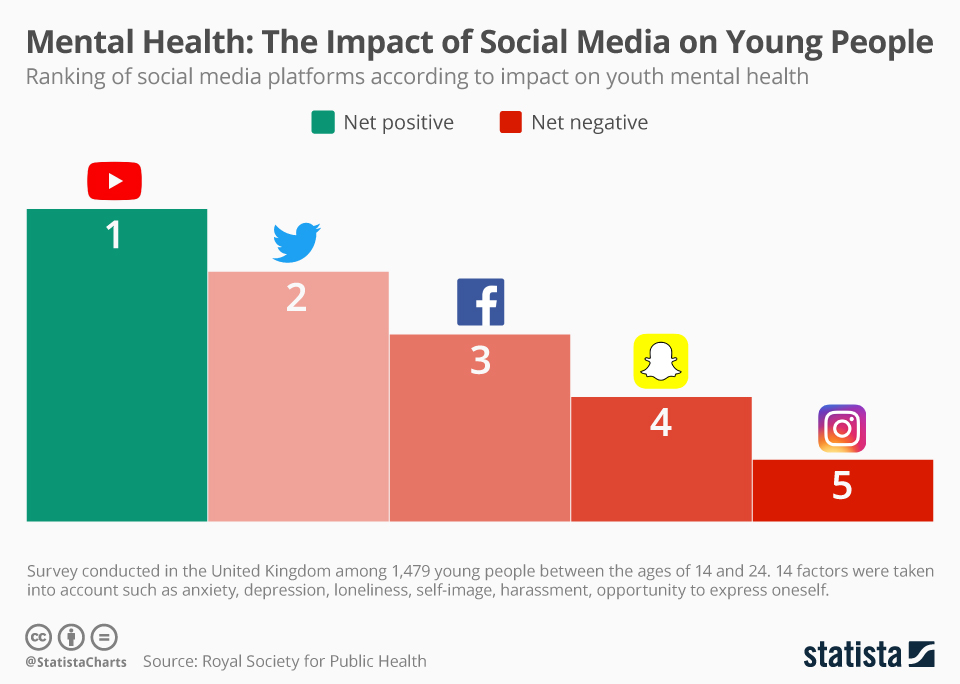VUCA. Vulnerability. Fragility. With a new paradigm, we need a new language. If we set VUCA aside as dated and insufficient, we still need a framework. A framework that gives a more emotional understanding of the current world. Such a framework would allow us to illustrate the magnitude of ongoing changes, understand our feelings towards it, and reflect on the types of responses to make – if any response exists. Ideally, this new acronym would serve as a platform (and a basis for a series of articles) to explore new forms of strategies. Even better, could we find a term that allows us to do away with acronyms altogether? This would break us free from the copy-pasting that VUCA experts seem stuck in.
I’m thinking about TUNA, VUCA PRIME, RUPT and LEAP. The inspiration even goes as far as to keep it to four letters. Can’t we draw inspiration from this while also managing to distance ourselves from it?
Welcome to the Age of Fragility
We are all vulnerable. That’s the conclusion of VUCA. As proof, if you revisit the articles describing VUCA, you will realize that our mental health has taken a hit:
- Volatility: feeling insecure about no longer keeping up with change. Fear of becoming obsolete.
- Uncertainty: stress, even anxiety, of not knowing what the future holds and being unable to prepare for it.
- Complexity: self-doubt and discouragement due to the difficulty of understanding an overwhelming environment that is impossible to master.
- Ambiguity: loss of bearings in the face of incomprehensible, contradictory, and concurrent events.
By taking the emotional angle of VUCA, it is clear that we need a new terminology. A more intimate terminology, on which we can act. As I wrote in the last article on VUCA management: this acronym has the merit of helping us find meaning. At least, for the period between the end of the Cold War and the advent of digital transformation – the “pre-pandemic” era. We now need a new language to express (and further explain) this world that has been in transition since the health crisis. A crisis where the enemy is invisible, all countries in the world are affected simultaneously. A world in which, through constraints on our freedom, the health of our loved ones, and the wavering of our professional career, we are all involved.
Therefore, I want to propose a replacement for VUCA. A proposal that works equally well on a personal level, for our businesses, our teams, and our communities. If you have read the previous five articles starting with this one, you will be able to relate. To find this new determination, and to propose a cause-and-effect relationship, let’s consider four elements linked to the four letters of the VUCA acronym.
- What is Volatile does not have time to settle and strengthen. It becomes Precarious.
- This precariousness means that we do not live in a world that is merely Uncertain but one of Perpetual Anxiety.
- This anxiety makes events not only complex, but in a state of Disruption.
- Thus, what was Ambiguous yesterday is now Paradoxical and Incomprehensible.
An intentional parallel to VUCA – Precarious, Anxious, Disruptive, and Incomprehensible – seems to provide a familiar framework for action in increasingly common situations. Time will tell if this framework accurately reflects the current context, which has gone from unstable to chaotic and unpredictable to incomprehensible. The concept of vulnerability could then become a means to respond to the current state of the world. Let’s look in more detail at what each of the concepts that compose this vulnerability means.
Vulnerable, fallible, precarious, temporary, unstable, provisional. – The reason for this fragility may be directly related to the lack of resilience. Yes, the bamboo that bends in the wind without breaking.
A world post VUCA
Vulnerability and Precariousness
When something becomes fragile, it is likely to collapse suddenly, unexpectedly, and catastrophically. But when something is designed to be fragile, that’s precariousness. You know it won’t last. You don’t know for how long.
Vulnerability, Effort, and Resilience
Without delving into the theory of collapse or the Medea hypothesis, fragile things can seem strong. Strength is an illusion. Everything seems solid until the day the breaking point is exceeded. And then, everything collapses. The famous actor or the respected professor who ends up in court for past misdeeds. The opera built hastily during the last socialist septennat. The centenarian photographic products company. The mobile phone brand. The firmly established dictatorship… According to the adage “This too shall pass”, everything is fleeting. Fragile systems are strong until they’re not. When the human body strengthens, as it is subjected to stress and effort, it becomes fragile at the joints. When popular movements grow as they are repressed, they become susceptible to disorder. When an expert becomes indispensable on a topic, they risk becoming blind to adjacent subjects and quickly obsolete. This fragility can be directly linked to the absence of immediate resilience. Resilience, in common language, is reduced to the ability to bounce back. This is a bit short. Resilience is mainly the ability to understand one’s strengths and weaknesses. This is, in fact, the title of the collection of philosophical reflections by Nassim Nicholas Taleb, published by Les Belles Lettres in 2010. The idea of this resilience is to understand one’s strengths and accept one’s weaknesses to stay standing, like the Lernean Hydra, whose heads multiplied as they were cut off.
Precariousness and Overexploitation
Precarious systems don’t fade away quietly; they collapse with a bang. Precariousness results from a sustained effort to extract maximum value from a given system. An easy example can be found in monocultures. Growing a single plant indeed achieves maximum yield, until. Until a bug destroys the entire field or the soils become unproductive without chemical inputs. The same applies to the exploitation of any natural resource. From lithium to oil. You are strong and then you’re not. Specialization becomes a source of fragility.
Precariousness and Volatility
Another evident source of fragility stems directly from the Volatility of VUCA! What could be more fragile than an exponential? Look at the effects of the shark fin and the big crunch. According to this effect, exponential growth can kill most alternative solutions on a market in an extremely short period. The “Big Crunch” happens when consumers adopt the next opportunity or technology so rapidly that they don’t leave the previous one time to settle. Again, like volatility, fragility is not a new phenomenon, but in the past, the consequences of catastrophic failures (the potato famine in Ireland, the obsolescence of guano in Peru, the drop in chocolate production in Ivory Coast, Chernobyl in Ukraine) were more or less limited to a regional level. Now, a financial crisis or a pandemic are global.

n today’s interconnected world, geopolitically, economically, and technologically, a catastrophic failure in one country can have a domino effect across the entire planet (the Greek debt, the Arab Spring, um, COVID-19 V1, V2, and VS). Moreover, we’re seeing fragility manifest in new and surprising ways. Few people would have considered democracy as a fragile system, until the threat of populism using false truths to prevail their point of view came along. How many fundamental systems on which humanity’s survival now depends can reasonably be considered “fragile”? Just list those most severely impacted by the pandemic – transportation, commerce. Then look at those running on fumes – energy networks, food supply. Well, to cut it short: ALL!
If fragility comes from the absence of room for failure, then all systems depending on maximal exploitation run the risk of collapse. As our core systems are interconnected and interdependent, it’s entirely possible that the failure of a key component could trigger a cascade of failures. In a tightly interwoven set of systems, it’s dangerous for a single piece to break down. This is the principle of criticality that I employ in the context of talent management. I don’t know about you, but thinking about this topic creates some anxiety.So…regenerative management
Instability and Anxiety
We now come to what VUCA calls uncertainty. The difference here is that we are interested in the effect that this uncertainty can have on our lives and morale. If VUCA gives you a worldview, focusing on vulnerability involves questioning our well-being.
Anxiety and Resignation
Located somewhere between stress and fear, anxiety comes from a feeling of helplessness and the fear that whatever we do, we’re making a bad decision. This is one of the reasons why anxiety can lead to passivity. After all, no choice = no bad choice! The only ones who never make mistakes are those who do nothing, so let’s do nothing. We will thus have the opportunity to complain about those who do.
This horrified realization that we missed the chance to make a critical decision that will not come again. This fear of making a decision is indeed central to my approach of the iconoclast as I described it in the iconoclast’s manifesto: 1. We are not afraid of what others think of us and our actions because we are the only judges. No need to try to manipulate us with flattery or “motivation” methods!
Anxiety and FOMO
This anxiety has integrated into our pop culture. From the Netflix series “13 Reasons Why” to the syndrome of “Fear Of Missing Out”. The fear of missing something.
Our media environment and social networks seem perfectly designed to reinforce anxiety. The presentation of information in the media focuses on the immediate rather than accuracy. We are surrounded by misinformation, exaggerations, pseudo-science, and fake news. We are also affected by the success, real or staged, of influencers living a life we would like to have. This is why for several years now, Instagram has been the site most affecting self-esteem, far ahead of Facebook and Twitter.

A significant number of individuals are adapting by seeking a quick way out. Suicidal rates are on the rise worldwide, according to surveys conducted in the USA. Many people are realizing that the seemingly good choices they made over the years were actually wrong, dead ends, or even harmful. Hardworking and honest individuals who once believed they were in control of their lives are discovering that, no, they are not… and they probably never were. This realization is not necessarily because someone or something else was actually in control, but rather because control was never possible to begin with.
However, when navigating in an environment marked by anxiety, it is crucial to learn how to manage these circumstances in a productive manner. In short, it is up to us to seek a positive perspective and to be clear in our own minds. It is on this basis that we can deduce the positive aspects, possibilities, and potentials for improvement.
Unfortunately, we often get distracted when constantly bombarded with news that reinforces this feeling of anxiety, which has notably increased over the past decades, according to surveys conducted in the USA. The current pandemic has even led to a significant spike in anxiety and depression. Meanwhile, the media tends to focus on current events, often omitting discussions about what is right or the potential consequences of specific actions. Moreover, we are confronted daily with what we refer to as “fake news.” These misinformation and misrepresentations further fuel the suppressed emotions mentioned earlier and contribute to the pervasive anxiety in all spheres of life.
Disruption and Non-linearity
In this context, the world appears nonlinear, leading to ruptures in cause and effect relationships. These effects can be disproportionate, with small causes resulting in enormous effects. In a world of ruptures, the outcomes of actions taken or not taken can become completely unbalanced. Small decisions can have massive consequences, whether positive or negative. Alternatively, significant efforts can yield little results. Interference or obscured factors from other systems may be at play, or there may be hidden hysteresis, enormous delays between visible cause and visible effect.
We are currently experiencing a nonlinear crisis with COVID-19. The magnitude and scope of this pandemic far exceed our everyday experience. The unpredictable speed at which the infection spread during the early months caught us off guard. Although some countries managed to reduce infection rates, such successes have been precarious. The global increase in cases continues to tend towards exponential growth. The concept of “flattening the curve” is itself a battle against nonlinearity.
Climate change is another nonlinear problem. We observe real and increasingly intense examples of the effects of climate change induced by global warming, even though we have only increased by one degree Celsius from pre-industrial levels. What few people realize is that what we are witnessing now is primarily the result of carbon emissions from the 1970s and 1980s. There is a massive inertia in the global climate system, and the consequences do not manifest immediately. This is the “hysteretic” element of our climate—an extended lag between cause and full effect.
This means that even if we had done everything in our power to comply with the Kyoto Protocol twenty years ago, we would likely still be experiencing the beginning of this climate chaos. It means that even if we were to completely cease all carbon emissions into the atmosphere right now, we would still see further warming for at least another generation, with continued high temperatures for centuries. The human brain simply has not evolved to comprehend this scale.
COVID-19 and the planet’s climate are not the only examples. Nonlinearity, particularly in terms of disproportionate causes and effects, is evident in the world of politics, especially international politics. How much did the Russian hacking of the 2016 US elections cost compared to the impact it had on the world? Terrorism can also be understood as a nonlinear war, considering the money and efforts required to undertake it versus the money and efforts spent on detecting, preventing, and retaliating against it.
We see it in the economy, from the rapid spread of financialization and the creation of new financial instruments to hyperkinetic algorithmic trading systems. The relentless demand for ever-increasing growth ultimately demands nonlinearity.
Most importantly, nonlinearity is pervasive in biological systems. Population growth and collapse, vaccine efficacy, swarm behavior, and, as we are witnessing now, the spread of pandemics—all exhibit strong nonlinear aspects. They are fascinating to observe from the outside and staggering to experience from within, as we are currently discovering.
The same applies to the economy, biological systems, medical health, and more. The full consequences of a given cause can take quite some time to manifest, and sometimes they are impossible to comprehend.
Incomprehensible and unpredictable
We are witnessing events and decisions that seem illogical or senseless, whether because their origins are too ancient, too ineffable, or simply too absurd. “Why did they do that?” “How did this happen?” We try to find answers, but they make no sense. Moreover, additional information does not guarantee better understanding. More data, even big data, can be counterproductive, overwhelming our capacity to comprehend the world and making it difficult to distinguish between noise and signal.
Incomprehensibility is the ultimate state of “information overload.” It is evident in systems and processes that seem faulty but still function, or that are nonfunctional without apparent logic or reason. It is a programmer’s cliché to encounter software that only works when a particular nonfunctional line, seemingly unrelated, remains in the code. Remove it, and the program crashes or fails to compile. Leave it inside, even if it seems to do nothing, and the program works. Why? It is incomprehensible.
Incomprehensibility seems intrinsic to the type of machine learning systems and artificial intelligence we are beginning to build. The more complex our AIs become, learning and doing more, the harder it is to precisely understand how they make their decisions. Programmers know that there is a network of logic at work, but they struggle to comprehend exactly how that network is formed. We cannot simply ignore this; regulations, such as those in the European Union, increasingly demand that users of algorithmic systems be able to explain how and why these systems arrived at their conclusions.
This is not just a technological puzzle. As AI software becomes more prevalent in our daily lives, we must be mindful of how complex algorithms can lead to racist, sexist, and other biased outcomes. Code that learns from us can learn more than the intended lessons and rules.
Furthermore, how can we understand systems in which complex behaviors almost flawlessly execute while simple functions fail randomly? Why can an autonomous system capable of traversing the country on its own crash into a wall when simply exiting a garage? Why can a learning system tasked with generating realistic human faces sometimes produce something utterly monstrous? One could argue that such things also happen with people, but we already knew that the human brain operates in the realm of the incomprehensible.
However, this assertion suggests an important point: incomprehensible now does not mean incomprehensible forever. There are certainly dynamics that remain shrouded in mystery and that we will eventually understand. It may be that the roughly 1,400 grams of incomprehensible meat inside our skulls must cooperate with an equally incomprehensible piece of silicon.
“The end is near.”
A cartoon character in a robe and beard seems less amusing these days. It is easy to mock apocalyptic thinking when such possibilities appear distant. When faced with the enormity of a climate catastrophe, a global pandemic, or any other preferred end-of-the-world scenario, a sidewalk doomsayer seems more like confirmation than provocation. Many of us who work in the field of future imagination often confront what could be called an “eschatological impulse”—a difficulty seeing our world in anything other than an apocalyptic frame. It is not because we want it that way, but because other frameworks seem inadequate or false. The danger of this impulse is that it can easily lead to surrender, a slide into despair. And this danger is not limited to futurists; for many people in the world, things are too strange, too uncontrollable, too immense, and too fragile to even begin to imagine appropriate responses.

But it doesn’t have to be this way. The BANI framework provides a lens through which we can see and structure what is happening in the world. At least on a superficial level, the components of the acronym may even suggest possibilities for response: fragility could be countered by resilience and release; anxiety can be alleviated through empathy and mindfulness; nonlinearity would require context and flexibility; incomprehension demands transparency and intuition. These may be more like reactions than solutions, but they offer a glimpse of the possibility of finding answers.
Perhaps all BANI needs to do is give a name to the fear that plagues so many of us right now, to acknowledge that it is not just us, not just this place, not just this moment. BANI asserts that what we are seeing is not a temporary aberration but a new phase. We have moved from water to steam.
Something massive and potentially overwhelming is happening. All our systems, from global networks of trade and information to the personal connections we have with friends, family, and colleagues, are changing—fundamentally, deeply, and sometimes painfully. This is something that may require a new language to describe. It is something that will undoubtedly require a new way of thinking to explore.
At first glance, these observations may cast a devastating light on the old world of VUCA. Fragility may be seen as a rather dystopian or even apocalyptic perspective. Working in the field of future scenarios always carries the risk of envisioning “end-of-the-world” images, as can be the case for the average citizen. Statistics and figures, such as suicide rates, studies on alcoholism, and other surveys, indicate that people worldwide are bewildered by the world of BANI at all levels. This can result in profound despair and a general tendency to succumb to pessimism. However, I urge you not to do so.


Recent Comments